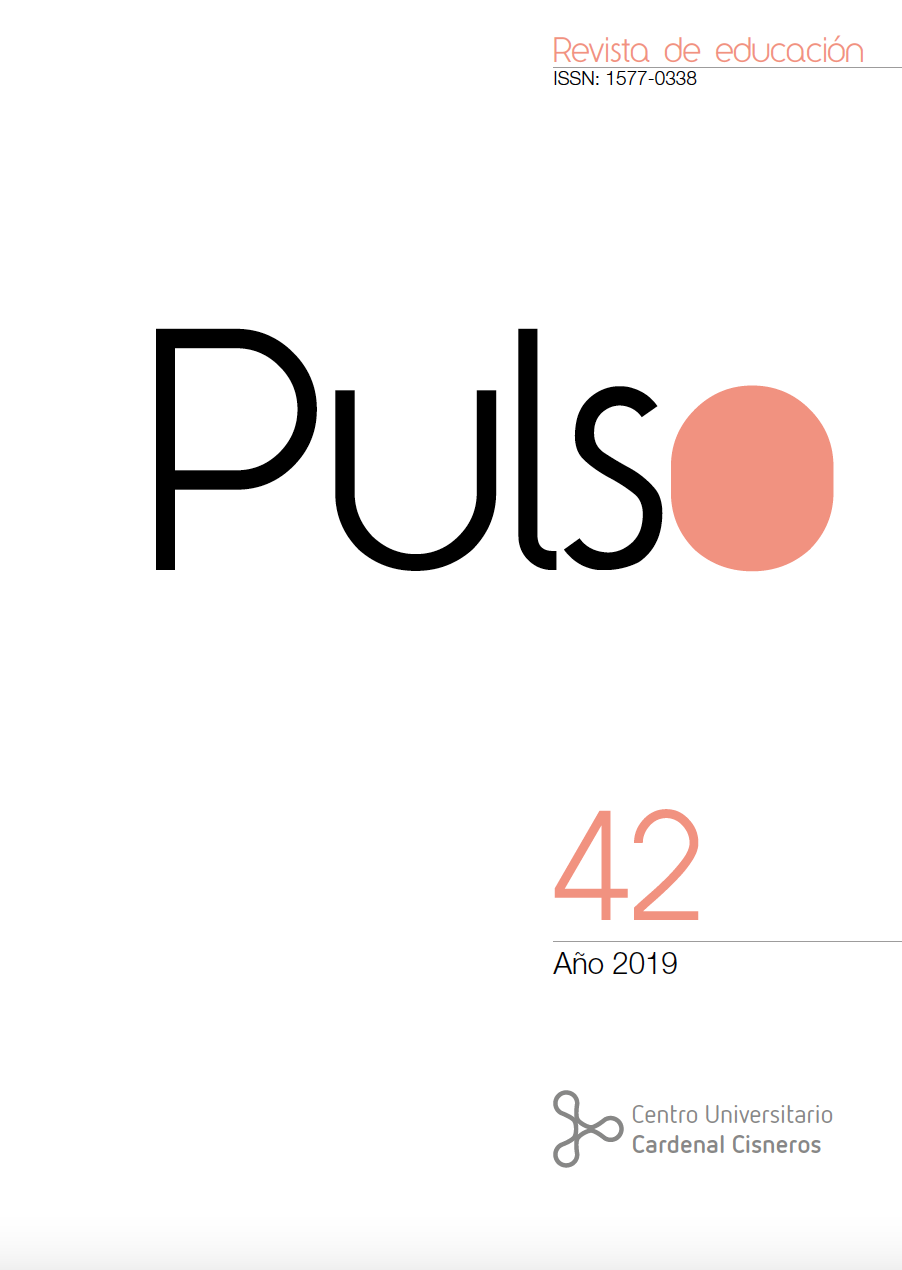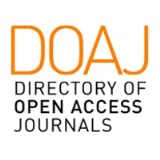Parents’ perspectives on the bilingual program in the region of Madrid
DOI:
https://doi.org/10.58265/pulso.4851Palabras clave:
AICLE, Region Madrid, Análisis de Datos, Perspectivas Parentales, ResultadoResumen
Este artículo intenta identificar las perspectivas de los padres sobre el Aprendizaje Integrado de Contenidos y Lenguas Extranjeras en Madrid. Presenta un estudio empírico que se realizó en Educación Secundaria Obligatoria en la región de Madrid. El estudio pretende identificar las creencias de los padres sobre el proyecto bilingüe y los logros de sus hijos aprendiendo un segundo idioma. Los datos se obtienen a partir de un cuestionario cualitativo y cuantitativo para examinar: uso, competencia y desarrollo del inglés de los alumnos en clase; metodología; materiales y recursos; evaluación; formación e información; movilidad; y finalmente mejora y motivación para aprender inglés. Se emplean técnicas estadísticas para medir los variables y demostrar el nivel de satisfacción de los padres.
Descargas
Citas
Azzaro, G., & Rice, R. (2012). Technology in content and language integrated learning. In J. D. Martínez Agudo (Ed.), Teaching and learning English through bilingual education (pp. 149-180). Newcastle upon Tyne, UK: Cambridge Scholars Publishing.
Baker, C., & Jones, S. P. (1998). Encyclopedia of bilingualism and bilingual education. Multilingual Matters.
Breidbach, S., & Viebrock, B. (2013). Content and language integrated learning (CLIL) in Europe: Research perspectives on policy and practice. Mehrsprachigkeit in schule und unterricht. New York: Peter Lang.
Bruton, A. (2013). CLIL: Some of the reasons why… and why not. System, 41, 587-597.
Byram, M., & Grundy, P. (2003). Introduction: Context and culture in language teaching and learning. In M. Byram, & P. Grundy (Eds.), Languages for intercultural communication & education: Context and culture in language teaching and learning (pp. 1-17). Clevedon: Multilingual Matters. Retrieved from http://www.ebrary.com
Cenoz, J., & Genesee, F. (1998). Beyond bilingualism: Multilingualism and multilingual education. Multilingual Matters.
Cummins, J. (2000). Language, power and pedagogy: Bilingual children in the crossfire. Clevedon: Multilingual Matters.
Dalton-Puffer, C. (2011). Content-and-language integrated learning: From practice to principles? Annual Review of Applied Linguistics, 31, 182-204.
De Graaff, R., Koopman, G. J., & Westhoff, G. (2007). Identifying effective L2 pedagogy in content and language integrated learning (CLIL). Vienna English Working Papers, 16(3), 12-19. doi: 10.2167/beb462.0
Gerena, L., & Ramírez-Verdugo, M. D. (2014). Analyzing bilingual teaching and learning in Madrid, Spain: A Fulbright scholar collaborative research project. Gist: Education and Learning Research Journal, 8, 118-136.
González, J. M. (2008). Encyclopedia of bilingual education. Los Angeles: SAGE Publications, Inc.
Grosjean, F. (2010). Bilingual: Life and reality. Cambridge, MA, USA: Harvard University Press.
Hamers, J. F., & Blanc, M. (2000). Bilinguality and bilingualism. Cambridge University Press.
Hindin, A. (2010). Linking home and school: Teacher candidates’ beliefs and experiences. The School Community Journal, 20(2), 73- 90.
Kostogriz, A. (2009). Professional ethics in multicultural classrooms: English, hospitality and other. In J. Miller, A. Kostogriz, & M. Gearon (Eds.), New perspectives on language and education: Culturally and linguistically diverse classrooms: New dilemmas for teachers (pp. 132-150). Clevedon, GBR: Multilingual Matters.
Lancaster, N. K. (2016). The effects of content and language integrated learning on the oral skills of compulsory secondary education students: A longitudinal study (Doctoral dissertation). Jaen University, Jaen, Spain.
Lasagabaster, D., & Doiz, A. (2016). CLIL students’ perceptions of their language learning process: Delving into self-perceived improvement and instructional preferences. Language Awareness. 25(1-2), 110-126. doi: 10.1080/09658416.2015.1122019
Llinares, A., & Dafouz, E. (2010). Content and language integrated language programmes in the Madrid region: Overview and research findings. In D. Lasagabaster, & Y. Ruiz de Zarobe (Eds.), CLIL in Spain: Implementation, results and teacher training (pp. 95-113). Newcastle upon Tyne: Cambridge Scholars Publishing.
Llinares, A, Morton, T., & Whittaker, R. (2012). The roles of language in CLIL. Cambridge: Cambridge University Press.
Lindholm-Leary, K.J. (2001). Bilingual education and bilingualism, 28: Dual language education. Clevedon, GBR: Multilingual Matters.
Lorenzo, F., Casal, S., & Moore, P. (2009). The effects of content and language integrated learning in European education: Key findings from the Andalusian bilingual sections evaluation project. Applied Linguistics, 31(3), 418-442.
Marsh, D. (2002). CLIL/EMILE. The European dimension. Actions, trends, and foresight potential. Jyväskylä: University of Jyväskylä. Retrieved from http://ec.europa.eu/education/languages/pdf/doc491_en.pdf
Marsh, D. (2012). Content and language integrated learning CLIL) a development trajectory. (Doctoral Dissertation). Córdoba: University of Cordoba Academic Press.
Martínez Adrián, M., & Gutiérrez Mangado, M. J. (2015). Is CLIL instruction beneficial in terms of general proficiency and specific areas of grammar? Journal of Immersion and Content-Based Language Education, 3(1), 51-76.
McNeal, R. B., Jr. (2014). Parent involvement, academic achievement and the role of student attitudes and behaviors as mediators. Universal Journal of Educational Research, 2(8), 564-576.
Meyer, O. (2010). Towards quality CLIL: Successful planning and teaching strategies. Pulso. 33, 11-29.
Pérez Cañado, M. L. (2011). The effects of CLIL within the APPP: Lessons learned and ways forward. In R. Crespo, & M. García De Sola (Eds.), Studies in honour of Ángeles Linde López (pp. 389-406). Granada: Universidad de Granada.
Pérez Cañado, M. L. (2016). Evaluating CLIL programmes: Instrument design and validation. Pulso: Revista de Educación, 39, 79-112.
Rascón Moreno, D. J., & Bretones Callejas, C. M. (2018). Socioeconomic status and its impact on language and content attainment in CLIL contexts. Porta Linguarum, 29, 115-135.
Roos, J. (2014). CLIL: Approaching content through communicative interaction. In R., Kupetz, & C., Becker (Eds.), Fremdsprachendidaktik inhalts- und lernerorientiert/ Foreign language pedagogy -content- and learner-oriented: Content and language integrated learning by interaction (pp. 101-122). Frankfurt am Main, DEU: Peter Lang.
Scott, D., & Beadle, S. (2014). Improving the effectiveness of language learning: CLIL and computer assisted language learning. London: Watling House.
Tabatadze, S. (2015). Factors influencing the effectiveness of bilingual educational programs: The prospects of pilot programs in Georgia. Sino-US English Teaching, 12(2), 93-109.
Vez, J. M. (2009). Multilingual education in Europe: Policy developments. Porta Linguarum, 12, 7-24.
Wolff, D. (2011). CLIL and learner autonomy: Relating two educational concepts. Education et Sociétés Plurilingues, 30, 69- 80.
Descargas
Publicado
Cómo citar
Número
Sección
Licencia
Derechos de autor 2022 Pulso. Revista de educación

Esta obra está bajo una licencia internacional Creative Commons Reconocimiento-NoComercial-SinObraDerivada 3.0.
Esta revista proporciona un acceso abierto inmediato a su contenido, basado en el principio de que ofrecer al público un acceso libre a las investigaciones ayuda a un mayor intercambio global de conocimiento.
Las obras se publican en la edición electrónica de la revista bajo una licencia Creative Commons Reconocimiento-NoComercial-SinObraDerivada 4.0
Se permite y se anima a los autores a difundir electrónicamente la versión post-print (versión evaluada y aceptada para su publicación) de sus obras antes de su publicación, ya que favorece su circulación y difusión más temprana y con ello un posible aumento en su citación y alcance entre la comunidad académica.














